Florian B. Pokorny
HEAR4Health: A blueprint for making computer audition a staple of modern healthcare
Jan 25, 2023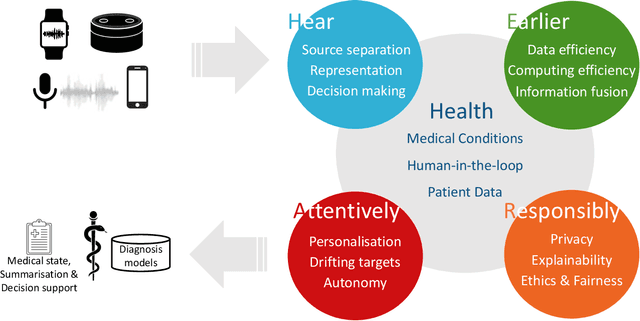

Abstract:Recent years have seen a rapid increase in digital medicine research in an attempt to transform traditional healthcare systems to their modern, intelligent, and versatile equivalents that are adequately equipped to tackle contemporary challenges. This has led to a wave of applications that utilise AI technologies; first and foremost in the fields of medical imaging, but also in the use of wearables and other intelligent sensors. In comparison, computer audition can be seen to be lagging behind, at least in terms of commercial interest. Yet, audition has long been a staple assistant for medical practitioners, with the stethoscope being the quintessential sign of doctors around the world. Transforming this traditional technology with the use of AI entails a set of unique challenges. We categorise the advances needed in four key pillars: Hear, corresponding to the cornerstone technologies needed to analyse auditory signals in real-life conditions; Earlier, for the advances needed in computational and data efficiency; Attentively, for accounting to individual differences and handling the longitudinal nature of medical data; and, finally, Responsibly, for ensuring compliance to the ethical standards accorded to the field of medicine.
COVYT: Introducing the Coronavirus YouTube and TikTok speech dataset featuring the same speakers with and without infection
Jun 20, 2022

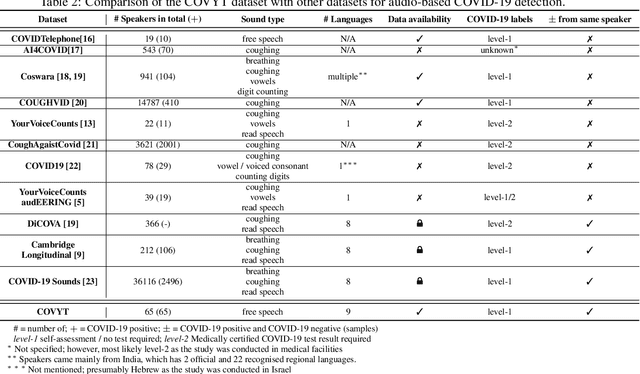
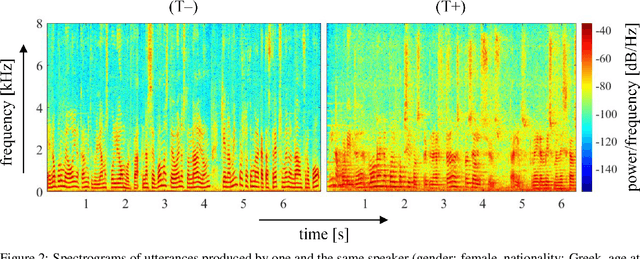
Abstract:More than two years after its outbreak, the COVID-19 pandemic continues to plague medical systems around the world, putting a strain on scarce resources, and claiming human lives. From the very beginning, various AI-based COVID-19 detection and monitoring tools have been pursued in an attempt to stem the tide of infections through timely diagnosis. In particular, computer audition has been suggested as a non-invasive, cost-efficient, and eco-friendly alternative for detecting COVID-19 infections through vocal sounds. However, like all AI methods, also computer audition is heavily dependent on the quantity and quality of available data, and large-scale COVID-19 sound datasets are difficult to acquire -- amongst other reasons -- due to the sensitive nature of such data. To that end, we introduce the COVYT dataset -- a novel COVID-19 dataset collected from public sources containing more than 8 hours of speech from 65 speakers. As compared to other existing COVID-19 sound datasets, the unique feature of the COVYT dataset is that it comprises both COVID-19 positive and negative samples from all 65 speakers. We analyse the acoustic manifestation of COVID-19 on the basis of these perfectly speaker characteristic balanced `in-the-wild' data using interpretable audio descriptors, and investigate several classification scenarios that shed light into proper partitioning strategies for a fair speech-based COVID-19 detection.
Climate Change & Computer Audition: A Call to Action and Overview on Audio Intelligence to Help Save the Planet
Mar 10, 2022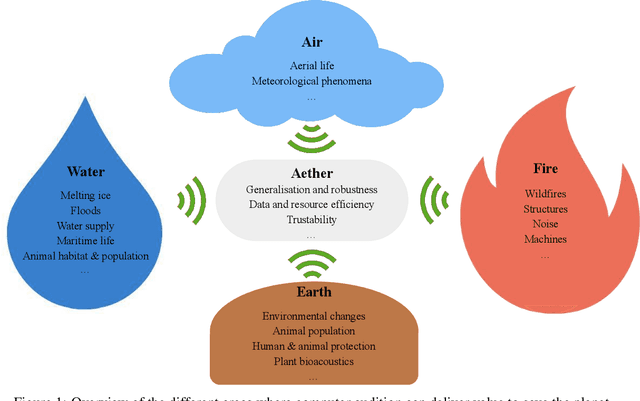
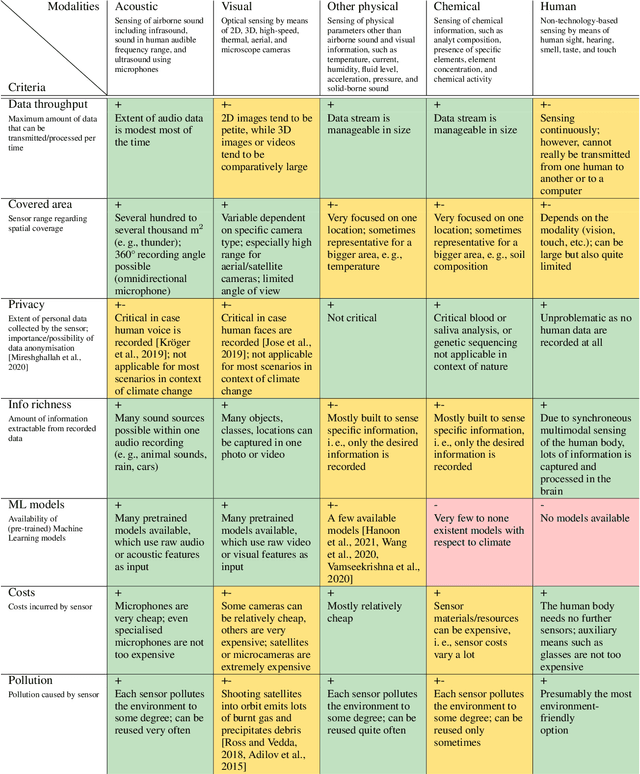

Abstract:Among the seventeen Sustainable Development Goals (SDGs) proposed within the 2030 Agenda and adopted by all the United Nations member states, the 13$^{th}$ SDG is a call for action to combat climate change for a better world. In this work, we provide an overview of areas in which audio intelligence -- a powerful but in this context so far hardly considered technology -- can contribute to overcome climate-related challenges. We categorise potential computer audition applications according to the five elements of earth, water, air, fire, and aether, proposed by the ancient Greeks in their five element theory; this categorisation serves as a framework to discuss computer audition in relation to different ecological aspects. Earth and water are concerned with the early detection of environmental changes and, thus, with the protection of humans and animals, as well as the monitoring of land and aquatic organisms. Aerial audio is used to monitor and obtain information about bird and insect populations. Furthermore, acoustic measures can deliver relevant information for the monitoring and forecasting of weather and other meteorological phenomena. The fourth considered element is fire. Due to the burning of fossil fuels, the resulting increase in CO$_2$ emissions and the associated rise in temperature, fire is used as a symbol for man-made climate change and in this context includes the monitoring of noise pollution, machines, as well as the early detection of wildfires. In all these areas, computer audition can help counteract climate change. Aether then corresponds to the technology itself that makes this possible. This work explores these areas and discusses potential applications, while positioning computer audition in relation to methodological alternatives.
Fitbeat: COVID-19 Estimation based on Wristband Heart Rate
Apr 19, 2021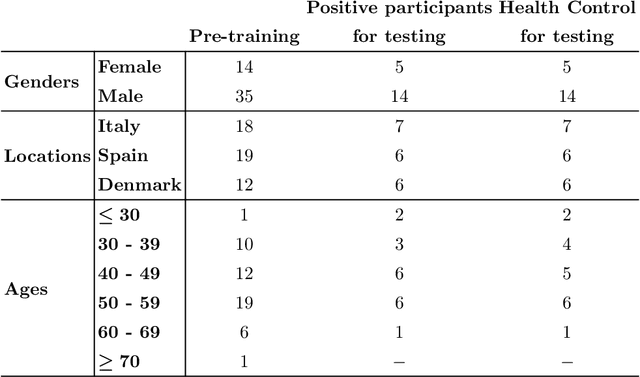

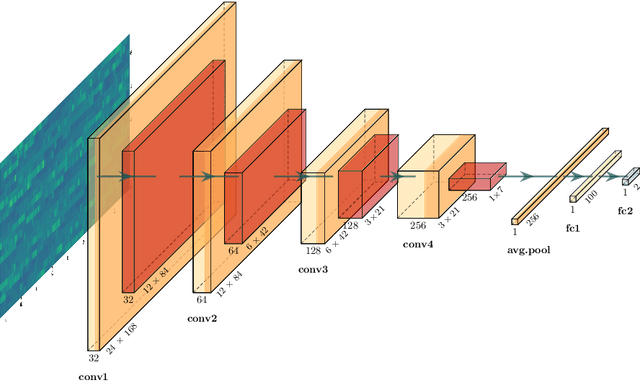
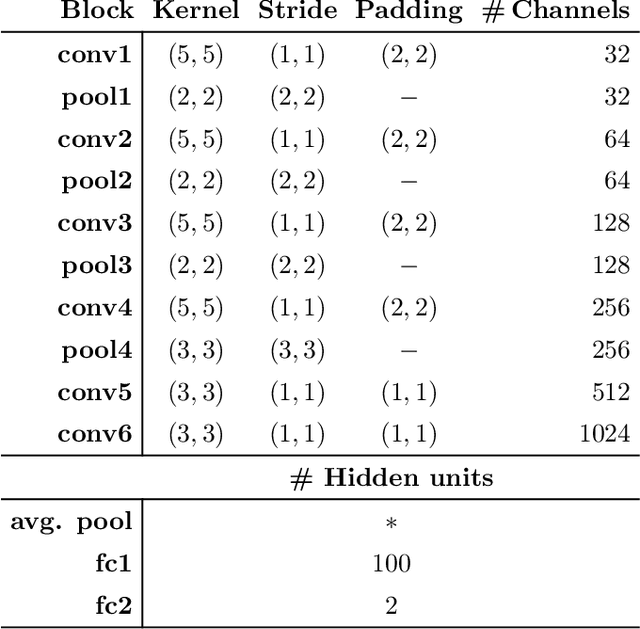
Abstract:This study investigates the potential of deep learning methods to identify individuals with suspected COVID-19 infection using remotely collected heart-rate data. The study utilises data from the ongoing EU IMI RADAR-CNS research project that is investigating the feasibility of wearable devices and smart phones to monitor individuals with multiple sclerosis (MS), depression or epilepsy. Aspart of the project protocol, heart-rate data was collected from participants using a Fitbit wristband. The presence of COVID-19 in the cohort in this work was either confirmed through a positive swab test, or inferred through the self-reporting of a combination of symptoms including fever, respiratory symptoms, loss of smell or taste, tiredness and gastrointestinal symptoms. Experimental results indicate that our proposed contrastive convolutional auto-encoder (contrastive CAE), i. e., a combined architecture of an auto-encoder and contrastive loss, outperforms a conventional convolutional neural network (CNN), as well as a convolutional auto-encoder (CAE) without using contrastive loss. Our final contrastive CAE achieves 95.3% unweighted average recall, 86.4% precision, anF1 measure of 88.2%, a sensitivity of 100% and a specificity of 90.6% on a testset of 19 participants with MS who reported symptoms of COVID-19. Each of these participants was paired with a participant with MS with no COVID-19 symptoms.
The voice of COVID-19: Acoustic correlates of infection
Dec 17, 2020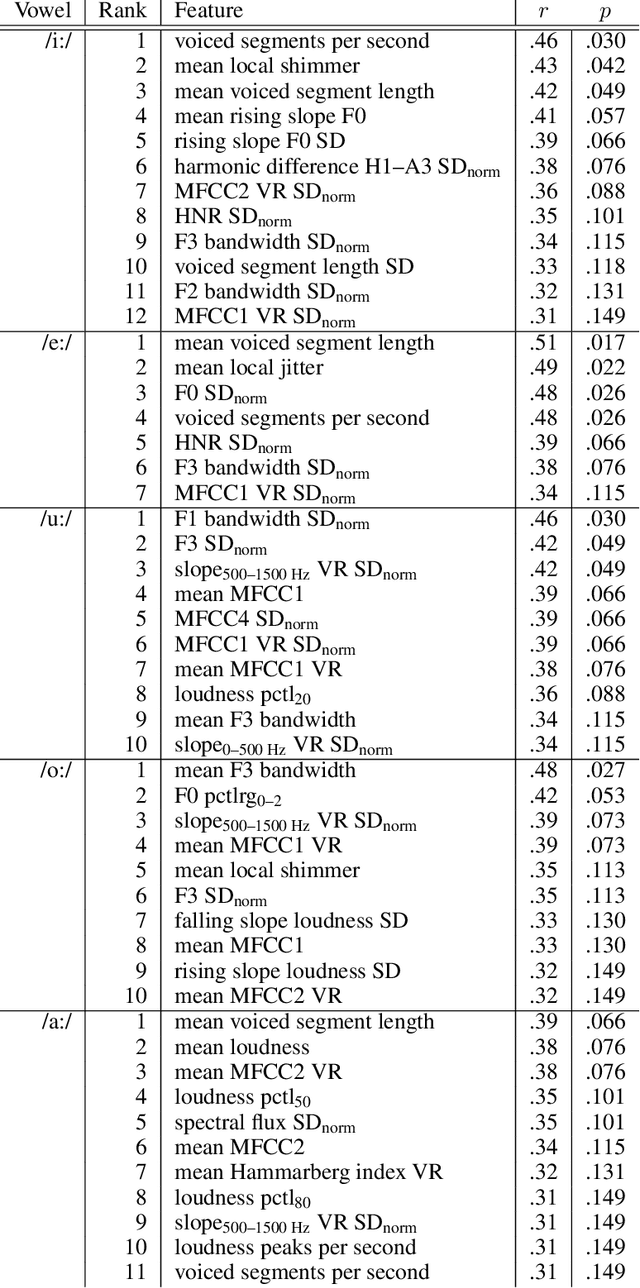
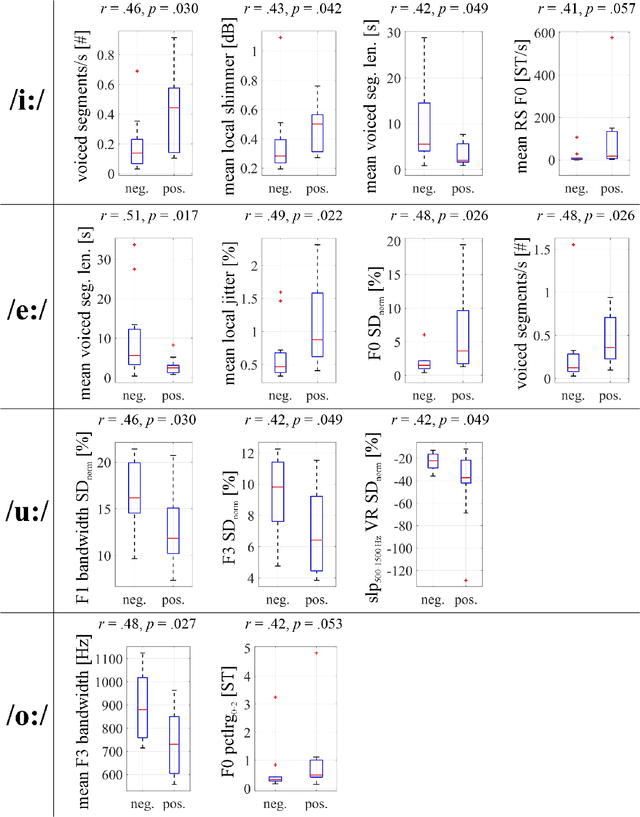
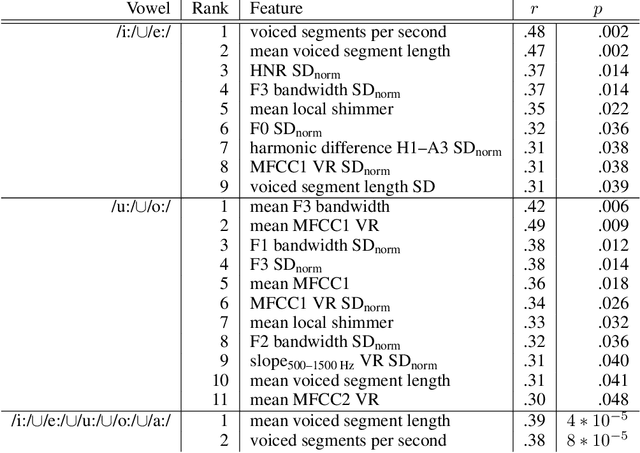
Abstract:COVID-19 is a global health crisis that has been affecting many aspects of our daily lives throughout the past year. The symptomatology of COVID-19 is heterogeneous with a severity continuum. A considerable proportion of symptoms are related to pathological changes in the vocal system, leading to the assumption that COVID-19 may also affect voice production. For the very first time, the present study aims to investigate voice acoustic correlates of an infection with COVID-19 on the basis of a comprehensive acoustic parameter set. We compare 88 acoustic features extracted from recordings of the vowels /i:/, /e:/, /o:/, /u:/, and /a:/ produced by 11 symptomatic COVID-19 positive and 11 COVID-19 negative German-speaking participants. We employ the Mann-Whitney U test and calculate effect sizes to identify features with the most prominent group differences. The mean voiced segment length and the number of voiced segments per second yield the most important differences across all vowels indicating discontinuities in the pulmonic airstream during phonation in COVID-19 positive participants. Group differences in the front vowels /i:/ and /e:/ are additionally reflected in the variation of the fundamental frequency and the harmonics-to-noise ratio, group differences in back vowels /o:/ and /u:/ in statistics of the Mel-frequency cepstral coefficients and the spectral slope. Findings of this study can be considered an important proof-of-concept contribution for a potential future voice-based identification of individuals infected with COVID-19.
 Add to Chrome
Add to Chrome Add to Firefox
Add to Firefox Add to Edge
Add to Edge